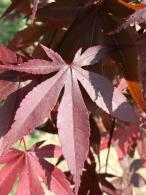Trochodendron Aralioides or Japanese Wheel Tree
1. Add items to basket
2. Go to the basket
3. Enter your postcode in Delivery Price Check
Trochodendron Aralioides, Japanese Wheel Tree or Taiwanese Parasol
Trochodendron aralioides is commonly referred to as the Japanese wheel tree because of the shrub’s flower stamens that spread out and look like the spokes of a wheel. Interestingly, in its natural habitat, it frequently grows as an epiphyte on the trunks of the Japanese cedar tree. The shrub grows throughout Japan into Taiwan and on Korea’s Cheju Island. In its wild environment, it grows at mountainous elevations of up to 3,000 meters.
The unique foliage of the Japanese wheel tree always draws the eyes. Its glossy green leaves grow in a spiral design around the tree’s small green petalless flowers. The flowers develop into tiny disc-like seed pods. The seeds are so tiny that they are dust-like when dispersed. The bark of the tree is highly aromatic.
The Japanese wheel tree grows best in full sun but will withstand partial shade. It prefers to be planted in well-draining soil that is sandy loam to clay with a soil pH of 4.5 to 8.5. However, it grows best when the pH is neutral. The tree flourishes in rich, fertile soil.
Unlike many other shrubs or trees, the Japanese wheel tree enjoys a cool maritime climate and tolerates salt spray well. For best growth, keep the soil moist but not overly saturated. The tree can withstand a temperature drop down to -10 degrees Celsius without sustaining damage.
When fully grown the picturesque tree reaches a height of about 5 meters with a width of 3 meters. Some exceptionally old trees have grown to a height of 7 ½ meters. It grows in a pyramid fashion with branching that is often ground level and gives the tree a more bush-like appearance.
The Japanese wheel tree is a wonderful addition to any woodland garden. It is also an ideal garden focal point and can be utilized as a privacy screen. Many people think that the tree’s lush appearance gives the garden a tropical look and feel.













